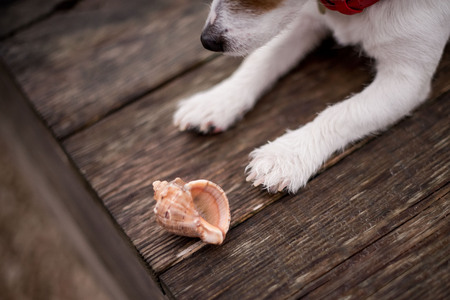Understanding Why Pets Escape
When it comes to keeping our beloved dogs and cats safe within the boundaries of a British garden or home, understanding the reasons behind their escape attempts is absolutely vital. Dogs and cats are naturally inquisitive creatures, often driven by instinct rather than mischief. For many, the allure of exploring beyond the fence or gate is simply irresistible. Behavioural instincts play a major role—dogs might be compelled to roam due to their territorial nature or in response to unfamiliar scents wafting from neighbouring gardens. Cats, meanwhile, are notorious for their curiosity and independent streaks, making them agile escape artists who can squeeze through the smallest gap or leap surprisingly high obstacles.
Boredom is another key factor that shouldn’t be underestimated. Pets left alone for long stretches may seek entertainment elsewhere, particularly if their environment lacks stimulation. A garden with little to do can quickly become dull for a lively spaniel or an adventurous tabby, prompting them to search for excitement outside the safety of home. Moreover, local British wildlife—such as birds, squirrels, or even urban foxes—can serve as tantalising distractions. The sight or scent of these wild visitors can trigger predatory or playful instincts in both dogs and cats, encouraging them to chase after them and inadvertently venture further than intended.
Recognising these motives is the first step towards effective outdoor security. By appreciating why pets attempt to leave the garden or home, owners can tailor their approach to prevention, combining practical measures with thoughtful enrichment to keep their furry companions content and secure within British gardens.
Garden Fencing and Secure Boundaries
Establishing robust garden boundaries is essential for preventing adventurous dogs and curious cats from slipping away. In Britain, where gardens are often a mix of tradition and practicality, choosing the right fencing or boundary is as much about aesthetics as it is about effectiveness. The classic English garden look—be it with privet hedges, rustic stone walls, or smart wooden panels—can be tailored to provide both charm and security.
Choosing the Ideal Fence Height
The appropriate height for your fence depends largely on the breed and agility of your pet. For most dogs, a fence between 1.5 to 1.8 metres (5-6 feet) is typically sufficient; however, some breeds known for their jumping abilities may require even taller barriers. Cats, being natural climbers, present a unique challenge. While a 1.8-metre fence may deter many cats, adding angled toppers or cat-proof rollers can enhance security without compromising the traditional garden look.
Materials Suited to British Gardens
| Material | Advantages | Considerations |
|---|---|---|
| Timber Panels | Blends well with garden design, easy to install/replace | Requires regular treatment to prevent rot in damp climates |
| Stone Walls | Long-lasting, visually appealing in cottage gardens | Can be expensive; may need additional measures for agile pets |
| Metal Railings | Durable, provides visibility and airflow | Cats can slip through gaps; infill panels may be needed |
| Hedges (Privet/Yew) | Aesthetic value, supports wildlife habitats | Takes time to establish; gaps at base must be blocked off for smaller pets |
Design Considerations for Security and Style
When selecting your boundary style, consider combining materials for both beauty and function—such as a low stone wall topped with secure timber panels or dense hedging. Always inspect for weak spots: ensure gates have proper latches, check for burrowing opportunities under fences, and avoid horizontal rails that can serve as launch pads for leaping pets.
Bespoke Solutions for British Weather
The British climate brings its own set of challenges—persistent rain can weaken wooden posts while frost can shift stonework. Choose treated wood or weatherproofed metal options and schedule annual checks each spring to spot any damage caused by winter weather. With thoughtful planning and regular maintenance, your garden boundary will keep both pets safe and the quintessential British garden appeal intact.

3. Pet-Safe Gates and Entry Points
Securing your garden gates and access points is essential for keeping your pets safe at home, especially in typical British gardens where wooden fences and side alleys are common escape routes. One of the most effective solutions is installing self-closing gate mechanisms. These ensure that even if you forget to shut the gate behind you, it will automatically swing shut and latch securely—an absolute must for busy households or when children are running in and out. For added peace of mind, consider a gate with a lock or combination latch that only adults can open.
Cats, being notorious escape artists, require a bit more ingenuity. Microchip cat flaps, widely used across the UK, allow only your own cats to enter or exit while keeping neighbourhood felines—and potential wildlife intruders—out. These smart flaps read your pet’s microchip and are ideal for doors leading from kitchens or conservatories into the garden. They’re also brilliant for deterring bold foxes or curious hedgehogs from popping in uninvited.
When choosing gates and entry systems, opt for designs without wide gaps underneath or between bars; small dogs and agile cats can squeeze through surprisingly tiny spaces! Some British pet owners add mesh panels or plant low shrubs near gaps as an additional deterrent. Remember: routine checks are important too—weather and wear can loosen hinges or warp wood over time, creating new opportunities for sneaky escapes.
4. Incorporating Environmental Enrichment
One of the most effective ways to prevent your beloved dog or cat from attempting a great escape is to transform your garden or outdoor space into an engaging, stimulating environment. Boredom and curiosity are two of the main drivers behind escape attempts, so providing plenty of enrichment can make staying put far more appealing than making a dash for freedom.
British Pet Toys: Keeping Paws Busy
Select toys that are durable and weatherproof, suitable for British weather conditions. Interactive puzzle feeders, treat-dispensing balls, and tough tug ropes are all excellent choices for dogs. For cats, consider robust scratching posts, dangling feather teasers attached to sturdy frames, and outdoor cat tunnels. Many UK-based pet brands offer specially designed toys that withstand the often wet and chilly climate.
| Pet Type | Recommended Toys (UK Brands) |
|---|---|
| Dog | KONG Extreme, Beco Ball, Rosewood Tough Tugger |
| Cat | Ancol Outdoor Cat Tunnel, PetSafe FroliCat Bolt Laser, Rosewood Catnip Mice |
Planting Suitable Greenery: Safe & Stimulating Spaces
The right greenery can encourage natural behaviours like sniffing, digging, or hiding—without risking toxic exposure. Opt for pet-safe British plants such as lavender, rosemary, marigolds, and grasses. Avoid foxgloves and lilies, which are common in UK gardens but toxic to pets. Create little nooks with shrubs or willow teepees for cats to hide in or dogs to explore.
Sample Pet-Friendly Plants for British Gardens:
- Lavender: Calming scent for both pets and humans
- Rosemary: Hardy and non-toxic, perfect for sniffing games
- Grasses (Carex or Festuca): Safe to chew on and adds texture
- Marigolds: Bright flowers that deter pests naturally
Enrichment Ideas Inspired by British Life
Add variety by rotating toys weekly or hiding treats around the garden—a classic British treasure hunt! Install a shallow digging pit filled with sand or soil for dogs who love to dig. Consider a bird feeder just out of reach to provide safe wildlife-watching entertainment. For cat owners, supervised “catio” enclosures allow outdoor time without risk. Regularly introduce new scents using herbs or pet-safe sprays to keep their senses sharp.
Summary Table: Enrichment Techniques at a Glance
| Enrichment Idea | Description/Tip | Best For |
|---|---|---|
| Toy Rotation | Swap toys weekly to maintain interest | Cats & Dogs |
| Treat Hunts | Hide treats in different spots outdoors | Cats & Dogs |
| Digging Pit | Create a designated area for digging fun | Dogs (and some adventurous cats!) |
| Catio/Enclosure | Add a secure outdoor extension for cats to enjoy fresh air safely | Cats |
| Scent Trails | Liberally scatter herbs or use scent sprays along paths and borders | Cats & Dogs |
By thoughtfully incorporating these environmental enrichment strategies inspired by life in Britain, you’ll not only help prevent escapes but also create a joyful sanctuary where your pets feel truly at home.
5. Local Wildlife and British Legal Considerations
When securing your garden to prevent dogs and cats from escaping, it’s essential to consider the unique challenges presented by local British wildlife and the legal obligations that come with pet ownership. The UK is home to a variety of wild animals, such as foxes, hedgehogs, badgers, and birds, all of which can attract curious pets or even create entry points through fences and hedges. It’s wise to regularly inspect boundaries for holes or disturbances caused by wildlife. Additionally, avoid using any deterrents that could harm native species—choose humane options like reinforced chicken wire or prickly but non-toxic plants along fence lines.
From a legal perspective, British law requires owners to ensure their pets are kept secure and do not cause a nuisance or danger in the neighbourhood. Under the Animals Act 1971 and the Dangerous Dogs Act 1991, you could be liable if your pet escapes and causes damage or injury. It’s also an offence for dogs to be ‘out of control’ in public spaces, so maintaining robust garden security is not just best practice—it’s a legal necessity. For cat owners, while cats are generally allowed to roam more freely under UK law, you are still responsible for ensuring they don’t repeatedly trespass or cause problems for neighbours.
Maintaining positive relationships within your community is equally important. If your pets have previously escaped or shown interest in neighbouring gardens, it’s good etiquette—and often essential—to speak with your neighbours about your security improvements. This fosters goodwill and helps prevent disputes. Consider leaving a note or having a quick chat if you’re installing new fencing or deterrents, especially if they border another property. Remember: being proactive about both wildlife risks and legal responsibilities will help keep your dog or cat safe while respecting the balance of British suburban life.
6. Practical Advice from British Pet Guardians
When it comes to preventing canine and feline escape artists from slipping through the cracks, no one knows the struggle better than UK pet guardians themselves. From bustling city terraces in Manchester to sprawling country gardens in Kent, British pet owners have faced — and conquered — all manner of Houdini-like antics.
Making Fences Fox-Proof and Cat-Smart
Emma from Surrey recounts her battle with her energetic Border Collie: “She used to leap over our old fence like an Olympian. We added an angled extension at the top, inspired by what local rescue centres use for foxes. It worked a treat!” Meanwhile, John in Birmingham shared how he prevented his tabby, Mabel, from squeezing out: “I fitted garden trellis panels above the wall and used special cat-proof rollers. She tried once or twice but soon gave up.”
Locking Down Gates and Escape Routes
Sue, a pet fosterer near Liverpool, emphasises the importance of solid gates: “I swapped out my flimsy latch for a proper lockable bolt after my rescue Staffie figured out how to nudge it open.” Many dog owners also recommend regularly checking for new holes or weak spots after storms or heavy rain, as these can become tempting exit points overnight.
Clever Deterrents and Enrichment
To keep cats content indoors or within catios, several guardians swear by adding shelves, scratching posts, and high perches. For dogs with wanderlust, Andy in Bristol says: “A Kong stuffed with treats distracts my Spaniel whenever I nip outside. Plus, we’ve trained recall using whistle cues — just in case!”
Community Support Makes a Difference
British pet lovers are renowned for their sense of community. Many recommend joining local Facebook groups or neighbourhood watch schemes to quickly alert others if a pet goes missing. As Margaret from Yorkshire puts it: “Within an hour of posting about my lost cat, half the street was helping me look — thankfully she was snoozing in next door’s shed!”
From tweaking your garden setup to enlisting neighbours’ help, real-life experiences across Britain show that vigilance and creativity are key. By learning from each other’s triumphs (and occasional mishaps), UK pet guardians are keeping their beloved companions safe and sound at home.


